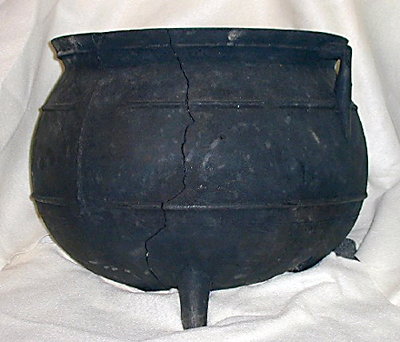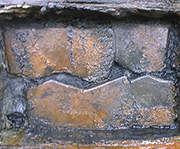
Cauldron
The cauldron is made of iron and has only two legs and three reinforcement rings. There are signs that a third leg was once attached, but has since broken off. After a mechanical cleaning, the cauldron was placed into electrolysis for conservation.
The cauldron was exposed at the southern end of a pile of anchors due to the prop wash deflectors used during the theft of the cannons. Because of its exposure and delicate condition archaeologists sampled its contents in situ on the sea floor and then recovered for conservation and analysis. The cauldron was recovered by attaching a webbed cradle around the outside. It was raised to the surface with a lift bag. Previous experience has shown that fragile cast iron objects often disintegrate during electrolytic reduction. This suggested that the prudent course of conservation would be to clean the exterior of the kettle only, which would allow the object to evolve during electrolysis while the marine growth on the interior helped to maintain the integrity of the object. This also allowed careful documentation of the cauldron before electrolytic treatment was begun. (the above photo shows the cauldron after conservation was completed). Once at the lab, it was measured, drawn, and recorded by still and video photography. After a mechanical cleaning, the cauldron was placed into electrolysis. It measures 39 cm high, 41 cm in diameter, and 0.5 cm thick at the rim.
Previous Next

